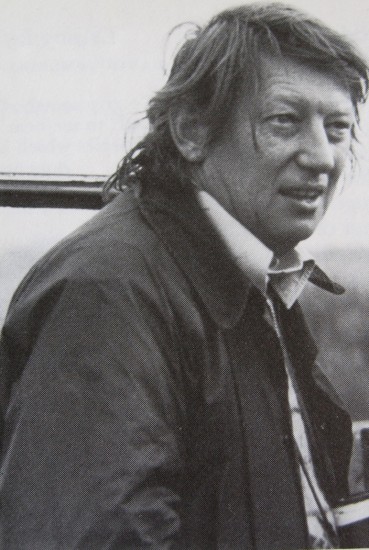
(pic. P.R.Crabb)
John Gooders, birdwatcher, author and businessman, born 10 January 1937; died 18 May 2010.
by Stephen Moss.
John Gooders, who helped transform birdwatching from a minority pastime into a leisure activity enjoyed by millions, has died aged 73. As the author of Britain’s first guide to birdwatching sites, along with more than 30 other bird books, Gooders did as much as anyone to popularise and democratise the hobby.
Following the huge success of his 1967 book Where to Watch Birds, which sold close to a quarter of a million copies, Gooders went on to create a one-man birding industry. As well as his writing work, he set up the wildlife picture agency Ardea with his first wife Su, and ran a successful bird tour company, taking hundreds of people around the world in search of birds.
Yet until the mid-1960s, Gooders’ birdwatching life was no different from that of his contemporaries. Born in South London, he had become interested in birds as a child, during wartime evacuations to East Anglia and Surrey. Like many of his generation, he benefited from the 1944 Education Act, gaining a place at Wandsworth Grammar School, after which he attended Southampton University, and qualified as a teacher.
His life changed when he was approached by fellow birder and entrepreneur Bruce Coleman. While on a business trip to the US, Coleman had come across a guide to birdwatching sites, and saw a gap in the market for a similar volume on this side of the Atlantic.
The first edition of Where to Watch Birds appeared in 1967, its small size and rather old-fashioned cover giving little indication of the revolutionary content within. Until this time, many of the birding hotspots in the book had been kept a closely-guarded secret by a coterie of elite birdwatchers, many of whom resented the ‘hoi-polloi’ being given equal access. Some people in the conservation establishment were also concerned that the book would draw unwanted attention to rare breeding birds, which might then be disturbed by hordes of birders, or fall victim to egg-collectors.
Fortunately Gooders had a powerful ally in the shape of the RSPB’s Director, Peter Conder, who gave the book his official blessing. As did the birding public, who bought the book in their thousands, using it to plan their birdwatching trips and holidays. Bill Oddie was an early fan: “It encouraged people to explore beyond their local areas. You could risk wandering farther afield and feel pretty certain that you would see some good birds.”
The success of Where to Watch Birds enabled Gooders to give up teaching and pursue a career as a professional writer and editor on birds and birdwatching. From 1969 to 1971 he edited the weekly part-work Birds of the World, published by IPC magazines. Priced at three shillings and sixpence, it became one of the most successful examples of this popular genre.
By the standards of the time, Birds of the World was an extraordinary work. Packed with colour photographs, it had an authoritative and readable text written by a wide range of experts. By drawing attention to exotic birds from around the globe, it had a profound effect on British birding, which until then had been a rather parochial affair.
For the next decade, Gooders travelled throughout Europe and beyond, publishing Where to Watch Birds in Europe (1970) and a host of other books on birds, as well as editing the short-lived but popular magazine World of Birds, the forerunner of many of today’s publications. He also worked briefly in television, writing scripts for Anglia’s Survival and the BBC’s World About Us.
In the early 1980s, with his second wife Robbie, he moved to East Sussex and set up the travel company Birding. Tour-leading suited his extrovert personality, as unlike some tour leaders of a more Spartan persuasion, he was well-known for combining exciting birding experiences with delights of a more gastronomic nature.
Back home, he spent ten years as Chairman of the Friends of Rye Harbour Nature Reserve, and became involved in local politics: co-founding, with Robbie, the Winchelsea Residents’ Association. They successfully prevented the construction of a road tunnel underneath the medieval port, coining the memorable slogan NUMBY – ‘Not Under My Back Yard’.
Later he was awarded the freedom of the town, becoming Mayor of Winchelsea in 2006, and, briefly, Speaker of the Cinque Ports. He also became interested in the Hastings Rarities – the ornithological equivalent of the Piltdown man fraud – and before he was taken ill, was planning to write a book on this celebrated scandal.
In person, Gooders was a larger-than-life, sociable character, likened by his friend Bruce Coleman to the TV cook Keith Floyd. But for generations of birders he will be fondly remembered as the man who opened up birdwatching to the masses, enabling it to shed its image as a pastime for what he once described as “elderly spinsters and retired colonels”, and turning it into an activity anyone could enjoy.
John Gooders is survived by Robbie, a son and daughter from his first marriage, a stepson, and four grandchildren.
This obituary first appeared in The Guardian on July 1st.